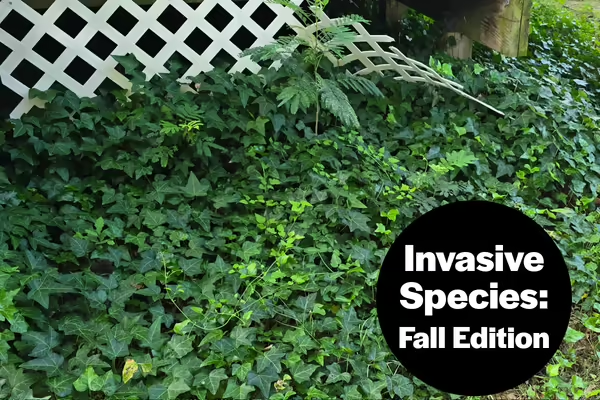
Join University of Illinois Extension Natural Resource, Environment and Energy Educator Jay Solomon for an Invasive Species Fall Edition program. The program will begin at 1:30 p.m. on Tuesday, October 7 at the Jo Daviess County Extension Office, 204 N. Vine Street, Elizabeth, IL. There is no fee to attend the program, but pre-registration is strongly encouraged by October 6. To register or for more information visit us online at go.illinois.edu/jsw or call the Extension Office at 815-858-2273.
“Invasive plants by definition are non-native, introduced by humans and do/can cause environmental or economic harm,” states Solomon. Fall can be a good time to address some invasive plant issues in your landscape. It is the best time to manage woody plants and some other perennials, whether it be as part of fall cleanup of flower beds or a more deliberate removal of undesirable plants.
Why should we be concerned about invasive plants? “These plants are classified as invasive species because they are not native to the area and have disruptive growth habits. They establish easily and displace native plants in our landscape without providing the same benefits to nature,” comments Solomon.
“Most woody and many perennial plants tend to be putting nutrient reserves back into the roots to help jump start next year’s growth during this time of year”, Solomon continues. “Disrupting this process by removing the above ground portion and/or selectively using herbicides can dramatically reduce the population next year. Also, woody invasive plants tend to be the last to go dormant in the winter making them easy to locate.”
Mechanical (cutting or pulling), chemical control, and combinations of methods will be discussed as well as a hands on demonstration of some helpful tools weather permitting.
Some plants that will be addressed during the workshop include woody invasives such as autumn olive, buckthorn, bush honeysuckle, and multiflora rose.
The workshop is intended to help those with a home landscape or small acreage get started.
University of Illinois Extension develops educational programs, extends knowledge, and builds partnerships to support people, communities, and their environments as part of the state's land-grant institution. Extension serves as the leading public outreach effort for University of Illinois Urbana-Champaign and the College of Agricultural, Consumer and Environmental Sciences in all 102 Illinois counties through a network of 27 multi-county units and over 700 staff statewide. Extension’s mission is responsive to eight strategic priorities — community, economy, environment, food and agriculture, health, partnerships, technology and discovery, and workforce excellence — that are served through six program areas — 4-H youth development, agriculture and agribusiness, community and economic development, family and consumer science, integrated health disparities, and natural resources, environment, and energy.